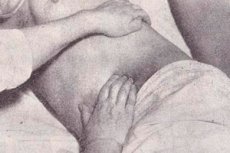Medical expert of the article
New publications
Percussion and palpation of the spleen
Last reviewed: 06.07.2025

All iLive content is medically reviewed or fact checked to ensure as much factual accuracy as possible.
We have strict sourcing guidelines and only link to reputable media sites, academic research institutions and, whenever possible, medically peer reviewed studies. Note that the numbers in parentheses ([1], [2], etc.) are clickable links to these studies.
If you feel that any of our content is inaccurate, out-of-date, or otherwise questionable, please select it and press Ctrl + Enter.

Technique percussion and palpation of the spleen.
One of the most traditional methods is topographic percussion of the spleen according to Kurlov, which is performed with the patient lying down and not fully turned to the right side. Percussion is performed along the tenth intercostal space, starting from the spine; the longitudinal size (length) of the spleen is determined along the boundaries of dullness, which in healthy individuals, as a rule, does not exceed 8 cm.
It should be noted that the accuracy of percussion determination of the size of the spleen is low, and this is due to the peculiarities of its anatomical location, the proximity of hollow organs (stomach, colon), which can significantly distort the results of the study.
Palpation of the spleen is carried out according to the general rules of deep sliding topographic palpation with the patient lying on the right side with the right leg straightened and the left leg slightly bent at the hip and knee joints.
Normal performance
If the spleen protrudes from under the costal margin, which can be observed either when it is enlarged or when it is lowered, the length of the protruding part is taken into account separately. The width (diameter) of the spleen (normally up to 5 cm) is determined by percussion from above from the anterior axillary line towards the posterior axillary line. The results obtained are expressed as a fraction, in the numerator of which the length is indicated, and in the denominator the width of the spleen. Normally, the spleen is most often located between the IX and XI ribs.
When taking a deep breath, the enlarged spleen descends and "rolls" over the examiner's fingers. When the spleen is significantly enlarged, its lower edge descends into the left hypochondrium, in which case it is possible to palpate the surface of the spleen, its characteristic notch, determine its consistency and soreness. Normally, the spleen is not palpated.


 [
[